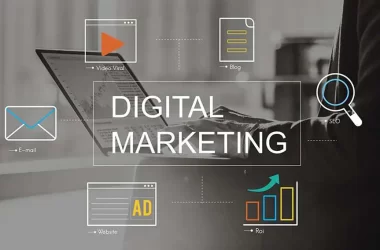The purpose of digital accessibility is to guarantee that everyone, regardless of age, gender, race, religion, sexual orientation, handicap, or any other factor, has easy and free access to the internet and its connected services. Recognizing that only some are equally conversant with digital products and services is critical. They are only used by a few people. A screen reader can help the blind see, but someone with a learning handicap may prefer a different method of presenting the same information.
Everyone must have access to your digital information and services. What can you do to make this a reality? Please get in touch with QualityLogic if you want assistance in leveraging other resources to ensure your material is totally accessible. It is a software development company that offers QA testing in order to make all businesses accessible to individuals of all backgrounds.
If you employ them, they will check your application for security flaws and advise you on how to fix them in order to acquire digital accessibility certification. They provide tools for various businesses as well as specialist applications for Smart Energy and eCommerce. Before contacting them, please use the information below to confirm your status.
Make Your Content Easy to Read and Understand
Verify that what you’ve published is easy to understand. Although the method is time-consuming, it must be repeated. Use simple language and avoid technical terms to do this. Making your work broadly available also means making it available in a range of other media, such as audio and video, for individuals who want or are obliged to consume it in those formats.
Make Use of Media, Including Photographs and Video Clips
Incorporating media like images and videos into your material may boost its visual appeal and ease of use. Careless use of these may cause accessibility concerns, so use them cautiously. For visually challenged persons, it is vital to provide substitute text for any visual information, such as photos or videos. Make sure your still photos and video recordings have adequate contrast so that visually impaired people may see them well.
Convenience Should Be Prioritized
The most efficient strategy to ensure the accessibility of digital goods and services is to design them with people who rely on them in mind throughout the design phase. This demands addressing accessibility from the beginning of the design process (including user research) through the end (with product coding). Collaboration with accessibility experts helps guarantee that your designs are as accessible as possible.
Conduct Accessibility Evaluations
Even though your products and services were created with accessibility in mind from the beginning, usability testing is always advised. As a result, many forms of testing are required, such as automatic accessibility testing tools and manual testing by persons with disabilities.
Complying With Current Accessibility Laws and Standards
Laws and regulations, such as the Web Content Accessibility Guidelines (WCAG) 2.0, require accessibility. An increasing number of countries are generating such guidelines in order to standardize their processes. If you want to offer legal goods and services, you need to stay up to date on legal advancements.
The Benefits of Internet Access
The World Health Organization defines disability as “a single overarching concept that incorporates impairments, activity limits, and participation restrictions.” Physical, sensory, cognitive, intellectual, and behavioral health concerns can all contribute to the development of a disability. Disability is among the most frequent health problems worldwide, affecting an estimated one billion individuals. Yet, access to resources such as employment and education can be challenging for persons with disabilities.
One option for addressing these concerns is universal access to digital information and services. To accomplish this goal, it is necessary to design and construct websites and applications that are accessible to people with different disabilities, such as those who are blind or have restricted vision, deaf or hearing loss, or have cognitive or intellectual impairments. By minimizing the number of barriers that individuals with disabilities confront, access to digital information and services can help them live more independent and satisfied lives.
People With Disability and the Internet
While striving to appreciate digital media, people with physical or mental limitations confront a variety of problems. Software that converts written text into spoken language may be valuable for the visually impaired. Subtitles and transcripts can help people who are deaf or hard of hearing enjoy audio and visual content. It is vital to define the scope for individuals who need help understanding it.
Content that may be accessed via many input modalities, such as switches or eye-gaze sensors, may be valuable for those with physical limitations. If website designers and developers consider the aforementioned factors, they will be able to reach a larger audience with their digital material.
While Creating Designs, Keep the Visually Impaired in Mind
It is vital to know that not all digital information interactions in the environment are the same. People with visual impairments, such as blindness or poor eyesight, must rely on alternate methods of acquiring information. Some precautions must be taken before delivering electronic material to children. An equivalent written caption must accompany every visual element. Videos must also have closed captioning and audio explanations. You may use these methods to make all of your digital data easily accessible to anybody who needs it.
Designing With Auditory Needs in Consideration
While creating digital content, it is critical to consider the needs of a varied audience. People with impairments who struggle to adhere to a regular curriculum are included. Closed captioning enables deaf and hard-of-hearing people to enjoy videos and movies.
While designing closed captions for digital multimedia, there are a few things to keep in mind. The readability and comprehension of the captions are prioritized. Avoiding complicated pattern fonts and using large letter sizes are two examples. Captions and sound should also be in sync. The audio file can be manually or automatically transcribed using closed captioning software. Next, check the captions for errors and fix them if required.
If you follow these guidelines, all users, regardless of ability, will be able to engage with your digital content fully. Closed captions, audio descriptions, and sign language interpretation are all options for making your work more accessible. If the right conditions are met, digital material that appeals to a wide spectrum of viewers may be created.
Helping Individuals with Brain Problems
A number of challenges must be overcome when generating digital material for persons with cognitive disabilities. Each person is unique and should be treated as such. As a consequence, it’s vital to keep that in mind. Broad generalizations may be used to broaden the appeal of the material. For example, services for people with disabilities usually advocate for the use of simple language and imagery. Clarity improves comprehension, so try to eliminate whatever confusion you can.
It’s also crucial to allow lots of room for feedback and discussion. If the reader can link the information to their own experiences, they have a better chance of learning and remembering it. This advice can help designers create digital material that is both meaningful and easy to use for any audience.
Get in Touch With Qualitylogic as Soon as Possible
Regardless of its current state, any website may benefit from QualityLogic’s assistance in expanding its services. They must arrive and install the machinery for your business. You’ll learn all you need to know about digital accessibility, and they’ll even help you with the content creation process. There will be no surprises. They will coach you until you are as good as everyone else on their squad. Visit www.qualitylogic.com to learn more about how they can assist you in making your digital material more accessible.





